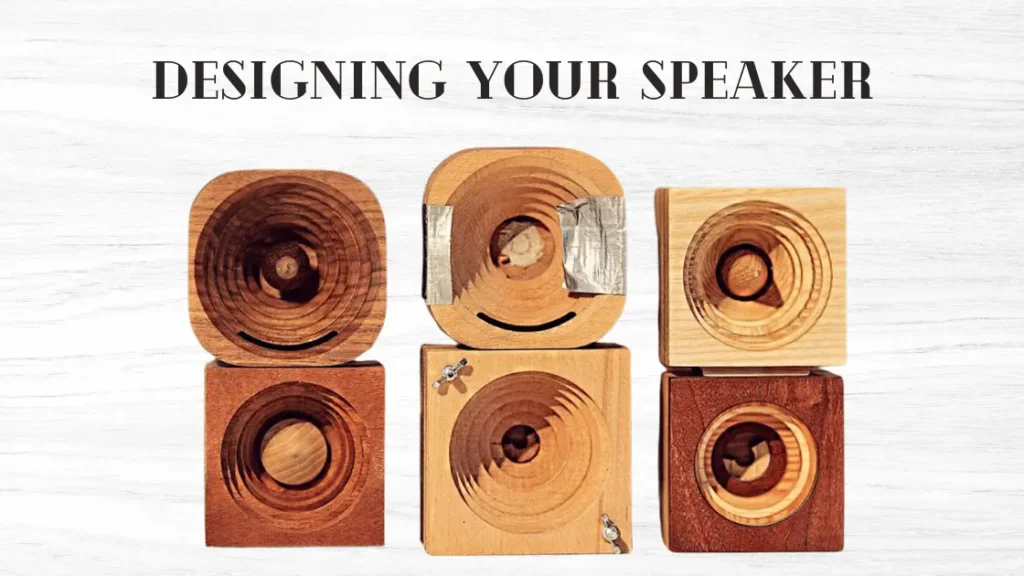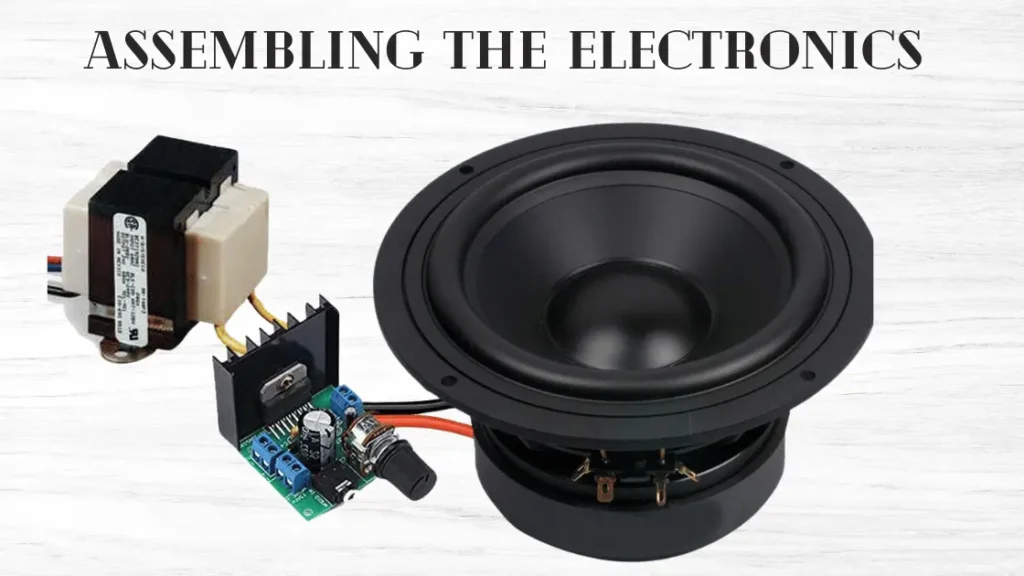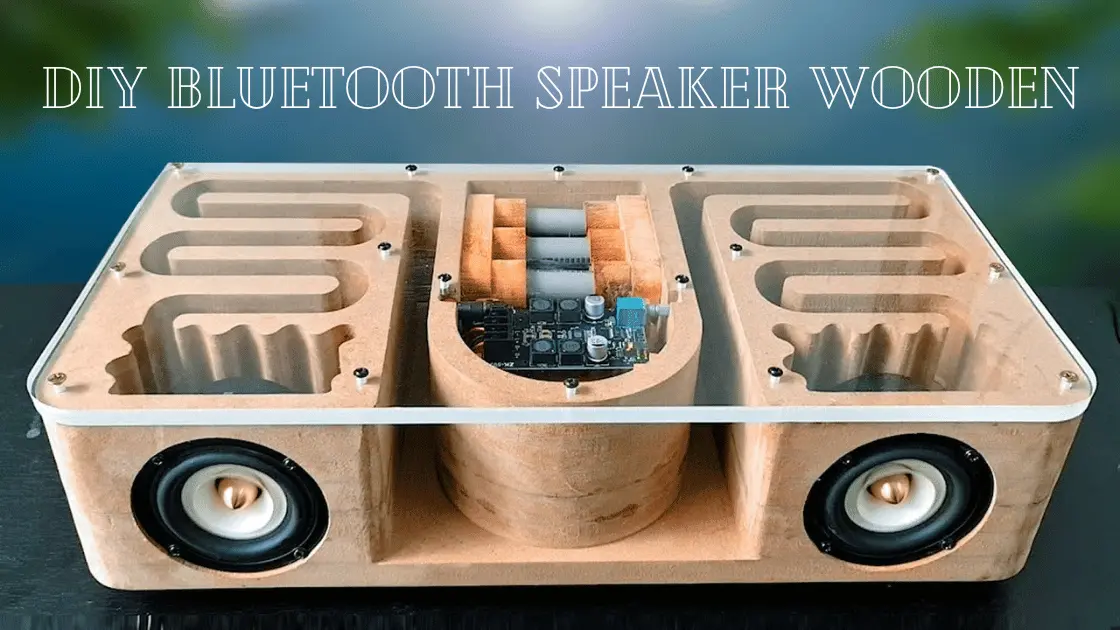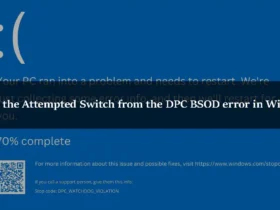Building your Bluetooth speaker offers a unique blend of creativity and functionality. A wooden enclosure provides a classic aesthetic and enhances sound quality by reducing vibrations. This guide will walk you through the materials, tools, and steps needed to create a custom wooden Bluetooth speaker.
You’ll learn to select the right components, assemble the speaker, and fine-tune it for optimal performance. Whether you’re a seasoned DIY enthusiast or a beginner, this project is manageable and highly satisfying. Dive in and create a personalized audio experience with your wooden Bluetooth speaker!
Introduction To Diy Bluetooth Speakers
Building your Bluetooth speaker can be a fun and rewarding project. A DIY Bluetooth speaker lets you customize the design and sound quality. You can also save money compared to buying a high-end speaker. This guide will teach you how to make a wooden Bluetooth speaker.
Why Build Your Own?
Creating a Bluetooth speaker yourself has several benefits:
- Customization: Choose your design and materials.
- Learning: Understand how speakers work.
- Cost-Effective: Save money on expensive brands.
- Fun: Enjoy a hands-on project.

Tools And Materials Needed
Before starting, gather the necessary tools and materials:
| Tools | Materials |
|---|---|
| Screwdriver | Wooden box or panels |
| Soldering iron | Bluetooth module |
| Hot glue gun | Speakers (drivers) |
| Drill | Battery pack |
| Wire cutter | Wires and connectors |
Make sure you have all items before you start. This ensures a smooth process.
Selecting The Right Wood
Choosing a suitable wood for your DIY Bluetooth speaker is crucial. The wood type affects sound quality, durability, and appearance. Here’s a guide to help you select the best wood.
Types Of Wood To Consider
Different woods have unique properties. Some are dense, others are light. Below are some commonly used types:
- Oak: Strong and durable, with a distinct grain pattern.
- Pine: Lightweight and easy to work with.
- Walnut: Rich color, smooth finish, but expensive.
- Birch: Pale color, smooth grain, affordable.
Pros And Cons Of Different Woods
Each wood type has its advantages and disadvantages. The table below outlines these:
| Wood Type | Pros | Cons |
|---|---|---|
| Oak | Durable, attractive grain | Heavy, can be hard to cut |
| Pine | Lightweight, easy to work with | Soft, can dent easily |
| Walnut | Beautiful finish, strong | Expensive, harder to find |
| Birch | Affordable, smooth grain | Less durable, prone to warping |
Consider your needs before making a choice. Some woods are perfect for quality sound. Others are easier to shape and design.


Designing Your Speaker
Designing your DIY Bluetooth speaker is a fun and creative process. This section covers crucial steps to make your speaker both functional and stylish. Follow these simple guidelines to create the perfect design for your wooden Bluetooth speaker.
Determining Speaker Size
The size of your speaker is significant. It affects both sound quality and portability. To determine the perfect size, consider these factors:
- Space: Where will you use the speaker?
- Portability: Do you need to carry it often?
- Sound Quality: Larger speakers usually offer better sound.
A compact design works well for a small room. A larger speaker may be better for outdoor use. Measure your space and decide accordingly.
Incorporating Aesthetics With Acoustics
Your speaker should look good and sound great. Balancing aesthetics and acoustics is key. Here’s how you can achieve both:
| Element | Tip |
|---|---|
| Wood Type | Choose dense wood for better sound. |
| Design | Keep the design simple for better acoustics. |
| Finish | Use varnish to enhance the wood’s look. |
Use the right type of wood and keep the design simple. This ensures your speaker looks elegant and performs well.
Electronics Basics
Building a DIY Bluetooth speaker can be fun and educational. Understanding the basics of electronics is crucial. This guide will help you grasp the essentials.
Understanding Bluetooth Technology
Bluetooth technology enables wireless communication between devices. It uses radio waves to send data over short distances. This makes it ideal for speakers.
Bluetooth operates on the 2.4 GHz frequency. It connects devices like phones, tablets, and laptops and is secure and stable.
Here are some key features of Bluetooth technology:
- Range: Typically up to 10 meters.
- Speed: Up to 3 Mbps.
- Compatibility: Works with most modern devices.
Components Of Bluetooth Circuitry
A Bluetooth speaker’s circuit has several components. Each plays a vital role in its functionality.
| Component | Function |
|---|---|
| Bluetooth Module | Receives and transmits Bluetooth signals. |
| Amplifier | Boosts audio signals to drive the speaker. |
| Speaker Driver | Converts electrical signals to sound. |
| Power Supply | Provides energy to the circuit. |
Understanding these components helps in building a reliable Bluetooth speaker. Here is a simple list of the steps to connect these components:
- Connect the Bluetooth module to the amplifier.
- Attach the speaker driver to the amplifier.
- Ensure the power supply is connected correctly.
Each component must be correctly connected. This ensures the speaker works efficiently.
Crafting The Wooden Enclosure
Creating a wooden enclosure for your DIY Bluetooth speaker adds a personal touch and enhances the sound quality. Let’s explore the steps involved in crafting the perfect wooden enclosure.
Cutting And Shaping Wood
Start by selecting high-quality wood. Hardwoods like oak or maple are great choices. Measure the dimensions of your speaker components and mark these dimensions on the wood.
Use a table saw to cut the wood pieces accurately. Ensure all pieces are cut to the correct size. Sand the edges to make them smooth. This prevents splinters and gives a clean look.
Next, shape the wood according to your design. You may want curved edges or unique shapes. Use a router to achieve these designs. Smooth all surfaces with fine-grit sandpaper.
| Tool | Purpose |
|---|---|
| Table Saw | Cutting wood to size |
| Router | Shaping edges and designs |
| Sandpaper | Smoothing surfaces |
Sealing And Finishing For Quality Sound
Sealing the wood improves the sound quality. Use a wood sealer to coat all surfaces. This prevents moisture and enhances durability.
Once the sealer dries, apply a finish. Choose a finish that matches your decor. Options include varnish, lacquer, or paint. Apply multiple coats for a glossy, smooth look.
Here are the steps to follow:
- Apply the wood sealer evenly.
- Let it dry for 24 hours.
- Sand lightly with a fine-grit sandpaper.
- Apply the finish in thin layers.
- Allow each layer to dry completely.
Finish off by assembling the wooden pieces. Use wood glue and clamps to hold them in place. Let the glue dry for a sturdy enclosure. Now, your Bluetooth speaker has a polished and professional look.


Assembling The Electronics
Assembling the electronics is a crucial step in building your DIY Bluetooth speaker. This section will guide you through soldering the components and testing the Bluetooth connection. Follow these steps for a seamless assembly process.
Soldering The Components
First, gather all the electronic parts. You will need:
- Breadboard
- Resistors
- Capacitors
- Bluetooth module
- Amplifier board
- Wires
- Soldering iron
- Solder
Begin by placing the components on the breadboard. Ensure each part is in the correct position. Refer to the following table for the placement:
| Component | Position on Breadboard |
|---|---|
| Resistor | Row 1, Column A |
| Capacitor | Row 2, Column B |
| Bluetooth Module | Row 3, Column C |
| Amplifier Board | Row 4, Column D |
Once everything is in place, start soldering. Heat the soldering iron and apply it to the joint. Add a small amount of solder to create a strong connection. Repeat this for each component.
Testing The Bluetooth Connection
After soldering, it’s time to test the Bluetooth connection. Follow these steps:
- Power on the Bluetooth module.
- Enable Bluetooth on your phone.
- Search for available devices.
- Select your Bluetooth module from the list.
- Pair your phone with the module.
- Play some music to test the connection.
If the music plays clearly, your soldering was successful. If not, check all connections and re-solder any loose joints. Ensuring a solid connection is vital to excellent sound quality.
With these steps, your DIY Bluetooth speaker will be ready to deliver high-quality sound. Happy building!
Final Assembly
The final assembly of your DIY Bluetooth speaker is the most exciting part. This is where all your hard work comes together, and you’ll see your creation come to life. Follow these steps to ensure a smooth assembly process.
Mounting The Speakers
First, position your speakers in the designated slots on the wooden enclosure. Make sure they fit snugly.
- Align the speaker holes with the pre-drilled holes in the wood.
- Use screws to secure the speakers firmly in place.
- Check that the speakers are tightly mounted to avoid any vibrations.
This step ensures that your speakers are stable and produce clear sound.
Securing The Electronics Inside
Next, secure the electronics inside the wooden enclosure. This includes the Bluetooth module, amplifier, and battery.
- Place the Bluetooth module in a safe spot.
- Fix the amplifier near the speakers for easy wiring.
- Secure the battery in a stable position to avoid movement.
Use adhesive tape or small screws to keep these components in place.
Make sure all wiring is neat and tucked away. This will help in avoiding short circuits and ensure a clean look.
Your DIY Bluetooth speaker is now ready for testing. Make sure everything is connected correctly, and enjoy your music!
Customization And Personal Touches
Creating a DIY Bluetooth speaker in wood offers endless possibilities. You can add your unique touch and make it one-of-a-kind. This section explores how to personalize your speaker with creative designs and optimize its sound quality.
Adding Creative Designs
Personalizing your Bluetooth speaker with creative designs is fun. Here are some ways to do it:
- Engraving: Use a laser engraver to add intricate patterns.
- Painting: Choose your favorite colors and paint the wood.
- Stenciling: Apply stencils for clean, professional-looking designs.
- Decoupage: Glue paper cutouts and seal them with varnish.
These methods will make your speaker unique and attractive.
Fine-tuning For Optimal Sound
After customizing the look, focus on sound quality. Follow these tips to fine-tune your speaker:
- Choose quality speakers: Invest in high-quality speaker components.
- Seal the enclosure: Use sealant to prevent sound leaks.
- Position the speakers: Place them at optimal angles for the best sound.
- Add insulation: Use foam or wool to reduce vibrations.
These steps will enhance your speaker’s sound performance.
| Customization Tip | Benefit |
|---|---|
| Engraving | Unique patterns |
| Painting | Personalized colors |
| Stenciling | Professional designs |
| Decoupage | Artistic touch |
Troubleshooting Common Issues
Building your own DIY Bluetooth speaker can be rewarding. However, you may face issues. This section will help you troubleshoot common problems. Let’s explore connectivity problems and sound quality adjustments.
Connectivity Problems
Bluetooth connectivity problems can be frustrating. Here are some common issues and fixes:
| Issue | Solution |
|---|---|
| Device not pairing | Ensure the speaker is in pairing mode. Check the manual for instructions. |
| Frequent disconnects | Move the speaker closer to the device. Remove any obstacles between them. |
| Interference | Turn off other Bluetooth devices. Avoid using microwaves near the speaker. |
Make sure your Bluetooth driver is up to date. Restart both the speaker and the device. This often resolves minor issues.
Sound Quality Adjustments
Good sound quality is crucial for a speaker. Here are some tips to improve it:
- Check the connections: Ensure all wires are securely connected.
- Adjust settings: Use your device’s equalizer to fine-tune the sound.
- Speaker placement: Place the speaker on a solid surface. Avoid corners and walls.
- Clean the speaker: Dust can affect sound quality. Wipe the speaker regularly.
Experiment with different settings. Find what works best for you. Feel free to make adjustments.
Maintenance And Care
Proper maintenance and care of your DIY Bluetooth Speaker Wooden can extend its lifespan. Keeping it clean and stored correctly ensures it functions well. Below are some essential tips for maintaining your speaker.
Cleaning And Storage Tips
Regular cleaning keeps your DIY Bluetooth speaker looking new. Follow these steps to clean it effectively:
- Use a soft, dry cloth to wipe the wooden surface.
- Avoid using water or harsh chemicals to clean.
- Dust the speaker grill with a soft brush.
Proper storage is crucial to prevent damage. Consider these tips for storing your speaker:
- Please keep it dry, calm, and away from direct sunlight.
- Store it in a dust-free environment.
- Avoid placing heavy items on top of the speaker.
Longevity Of Your Diy Speaker
To ensure the longevity of your DIY Bluetooth speaker, follow these recommendations:
| Aspect | Recommendation |
|---|---|
| Battery Care | Charge the battery fully before first use. Avoid overcharging. |
| Connection | Turn off Bluetooth when not in use. This saves battery life. |
| Usage | Do not expose the speaker to extreme temperatures. |
Regular checks and timely maintenance keep your DIY speaker in top condition. Enjoy high-quality sound for years!
Frequently Asked Questions
What Do I Need To Build My Bluetooth Speaker?
To build a Bluetooth speaker, you’ll need a Bluetooth module, amplifier, speaker drivers, battery, enclosure, and essential tools.
How To Make Vintage Speakers Bluetooth?
To make vintage speakers Bluetooth, connect a Bluetooth receiver to the speaker’s AUX or RCA input, pair your device, and enjoy wireless audio.
How To Make A Bluetooth Speaker Module?
Gather components like a Bluetooth:
- Gather the amplifier board and speaker to make a Bluetooth speaker module.
- Connect them according to their specifications.
- Ensure proper power supply.
- Est the setup for functionality.
An enclosure is needed for better sound quality and protection.
How Do I Turn My Normal Speakers Into Bluetooth Speaker?
To turn regular speakers into Bluetooth speakers, use a Bluetooth audio receiver. Connect the receiver to your speakers, pair it with your phone or device, and enjoy wireless audio streaming.
Conclusion
Crafting your Bluetooth speaker from wood is a rewarding project. It combines creativity with functionality. This guide provides clear steps to help you succeed. Build a unique, high-quality speaker that reflects your style. Enjoy your new DIY Bluetooth speaker and impress your friends with your craftsmanship skills.
Happy building!
Also Read: Way to Stress-Free Living- Wellhealthorganic Stress Management






Leave a Reply